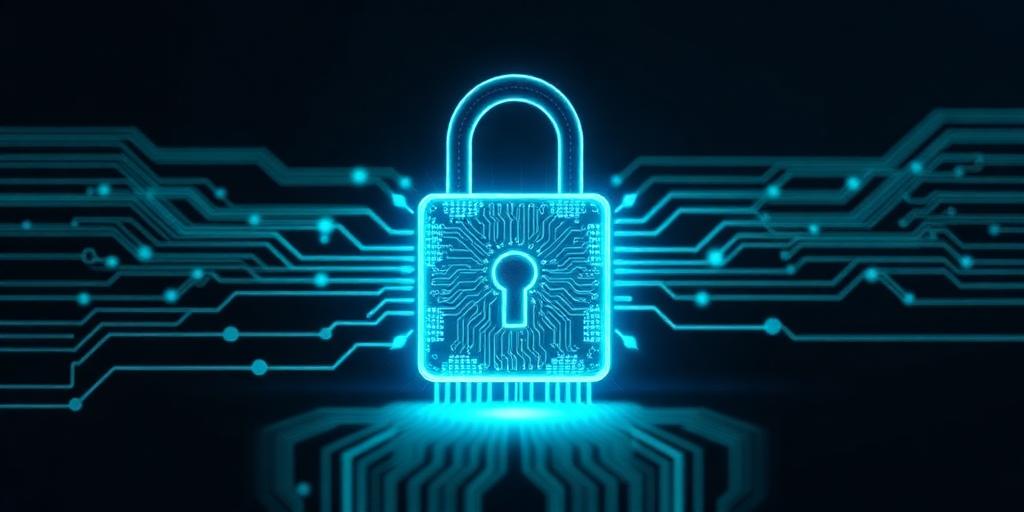Ransomware remains a pervasive and escalating threat within the digital landscape, capable of paralyzing organizations and individuals alike. Defined as a type of malicious software that encrypts a victim's files, demanding a ransom payment—typically in cryptocurrency—for their release, its impact extends far beyond financial loss, encompassing significant operational disruption and reputational damage. A comprehensive understanding of ransomware, coupled with robust preventive measures and a well-defined response protocol, is paramount for safeguarding digital assets in the current cyber threat environment.
Understanding the Mechanics of a Ransomware Attack
Ransomware typically infiltrates systems through various vectors, including phishing emails containing malicious attachments or links, exploitation of software vulnerabilities, or compromised Remote Desktop Protocol (RDP) connections. Once executed, the malware swiftly encrypts critical files, often appending a unique extension, and presents the victim with a ransom note detailing the payment instructions. The efficacy of these attacks lies in their ability to render data inaccessible, forcing a difficult choice between paying the ransom or accepting data loss.
Proactive Prevention Strategies: Fortifying Your Defenses
Effective ransomware prevention hinges on a multi-layered security approach. Organizations must implement a combination of technical controls, policy enforcement, and continuous education to mitigate risk. Protecting data from ransomware requires diligence and adherence to established cybersecurity best practices.
- Robust Backup and Recovery Strategy: This is unequivocally the most critical defense. Implement a 3-2-1 backup rule: three copies of data, on two different media, with one copy offsite or immutable. Regular testing of restore procedures is essential to ensure data integrity and recoverability.
- Employee Cybersecurity Training: Human error is a primary attack vector. Conduct regular, mandatory training sessions to educate employees on recognizing phishing attempts, safe browsing habits, and the importance of strong passwords. This is a key element in how to prevent ransomware attacks.
- Deploy Advanced Endpoint Protection: Utilize next-generation antivirus (NGAV) and Endpoint Detection and Response (EDR) solutions. These tools leverage behavioral analytics and machine learning to detect and block sophisticated malware, including unknown ransomware variants.
- Patch Management and Software Updates: Maintain all operating systems, applications, and firmware with the latest security patches. Vulnerabilities in unpatched software are frequently exploited by ransomware operators to gain initial access.
- Network Segmentation: Divide your network into isolated segments. This limits the lateral movement of ransomware within your infrastructure should an initial compromise occur, containing the damage and making it easier to isolate infected systems.
- Implement Multi-Factor Authentication (MFA): Enforce MFA for all remote access, sensitive systems, and cloud services. MFA significantly reduces the risk of unauthorized access even if credentials are stolen.
- Principle of Least Privilege: Grant users and systems only the minimum necessary permissions to perform their functions. This restricts the potential impact of a compromised account.
Responding to a Ransomware Attack: A Structured Approach
Despite robust prevention efforts, an incident may still occur. A well-rehearsed ransomware attack guide and incident response plan are vital for minimizing damage and expediting recovery.
- Isolate Infected Systems Immediately: Disconnect compromised machines and network segments from the rest of the network to prevent further encryption or propagation of the malware. This includes unplugging Ethernet cables and disabling Wi-Fi.
- Assess the Scope and Damage: Identify which systems are affected, the type of ransomware, and the extent of data encryption. Forensic analysis will be crucial to understand the attack vector and timeline.
- Engage Expert Incident Response: If internal capabilities are insufficient, immediately contact a professional cybersecurity incident response team. Their expertise is invaluable for containment, eradication, and recovery.
- Do NOT Pay the Ransom: Law enforcement agencies and cybersecurity experts strongly advise against paying ransoms. Payment does not guarantee data recovery, incentivizes further attacks, and may fund criminal enterprises. Focus on restoring from backups.
- Restore from Clean Backups: Once the network is secured and the malware eradicated, restore data from clean, verified backups. This process must be meticulously planned to ensure data integrity and minimal downtime.
- Post-Incident Analysis and Remediation: Conduct a thorough post-mortem to identify weaknesses exploited, improve security controls, and update incident response plans. Documenting lessons learned is critical for long-term resilience.
Conclusion
Ransomware poses an undeniable and evolving threat to organizational continuity and data security. While no single defense offers absolute immunity, a proactive and multi-faceted cybersecurity strategy, coupled with a meticulously prepared incident response plan, significantly reduces exposure and enhances recovery capabilities. By prioritizing robust backup strategies, continuous employee education, and advanced threat detection, organizations can substantially fortify their defenses against this pervasive cyber menace. Preparing for and responding to ransomware incidents is no longer optional; it is a fundamental pillar of modern organizational resilience.









